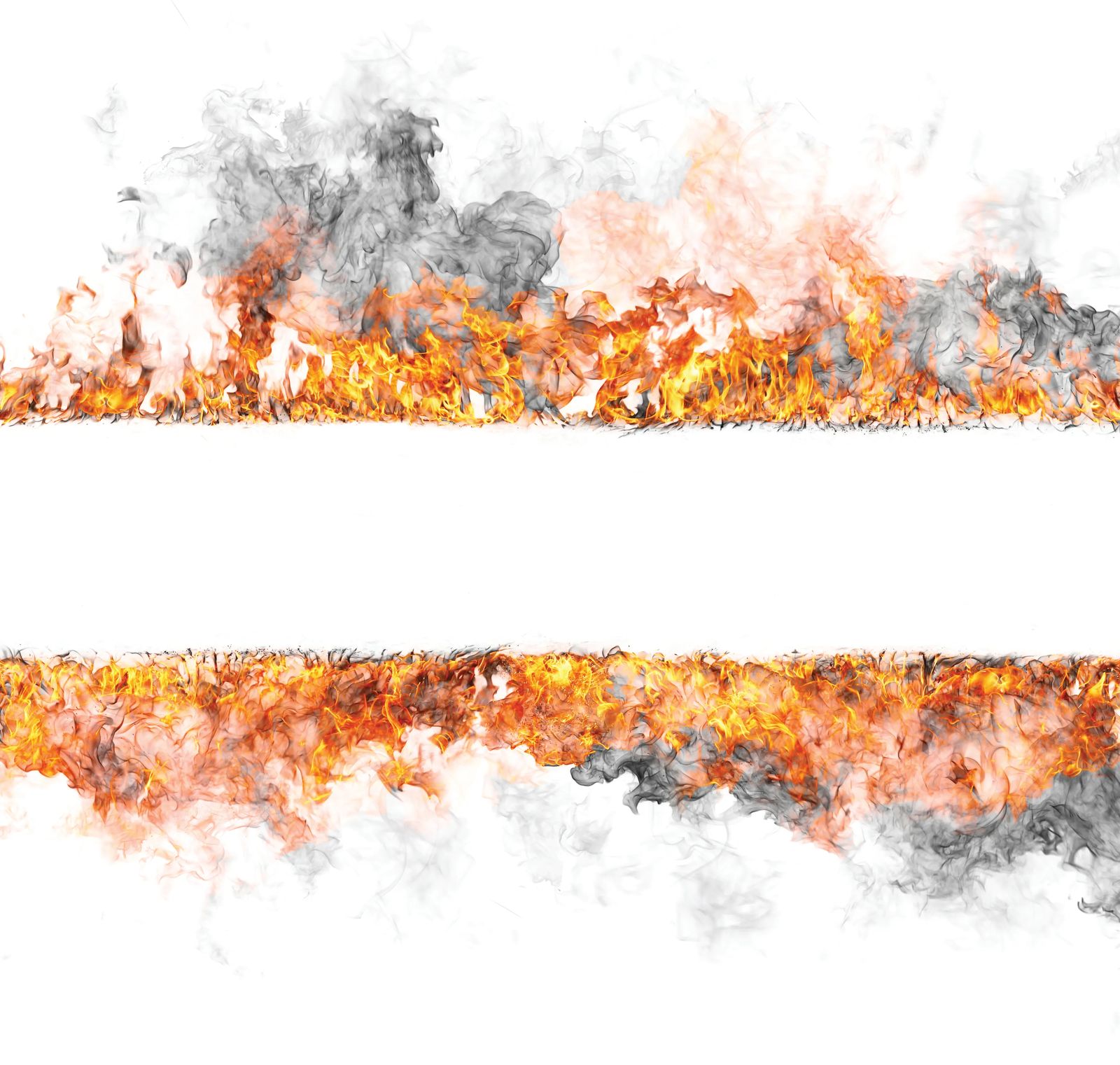
Great Storms of Fire
September 2021
by stephanie hobby
Wildfires are dangerous, destructive, and a part of summer life for much of the Western United States. And they are incredibly complex.
The incident management aspect alone is impressive. As the smoke rises, an entire team of people kicks into gear at an unimaginable pace. "Fire management is really complicated, but our training and familiarity with each other's roles allow us to respond with precision, and be nimble to adapt to unique situations," said Fire Information Officer for the Bureau of Indian Affairs Robyn Broyles.
A small set of specially trained experts from the incident management team oversee the response for larger fires. At the core, between eight and 12 people comprise the Command and General staff of an IMT, but as the fire grows, they can call in more support. As a result, IMT can be 30 to 50 people for substantial incidents, supporting between 100 and 4,000 firefighters assigned to that incident. IMTs handle the overall command of the incident, coordinate the operational response, track costs, manage legal accountability, and provide critical intelligence for decision-makers. Other team members work closely with local police, power companies, and other agencies directly impacted by the fires while also keeping community members informed.
Vitally important to the IMT are the incident meteorologists, who provide micro-forecasts for the region, studying what the fire is doing, where it's moving, the fuel sources, and the local weather. They release weather balloons and issue red-flag warnings while also working closely with firefighters on the ground to monitor the situation. This data is vital to incident command, who make plans to tackle the blazes based on what the weather forecasters foresee.
Incident meteorologists are also key players when it comes to understanding fire behavior. Obviously, wind, heat, humidity, and temperatures have a lot to do with how fires advance, but terrain also plays a huge role. Fire travels uphill quickly; as fuels below burn, they preheat the hillside, priming that area for fire to take hold.
One of the more interesting - and dangerous - aspects of fire behavior is how it can create its own weather. As the fire gets larger, particularly if the wind isn't too strong, a column of smoke rises into the upper troposphere and creates a thunderstorm essentially. Similar to a typical thunderstorm, the fire column and its thunderstorm can collapse, which can cause horrific downdrafts.
"When you're working underneath that column, firefighters always have to pay attention to what's going on with weather and fire behavior." said Broyles. "If the column collapses, it's incredibly dangerous for firefighters, because there is a tremendous amount of outflow wind that can create erratic fire behavior."
As the smoke rises and hits the upper atmosphere, it condenses with moisture in the atmosphere. The result is a pyrocumulus, or "fire cloud." If it continues to grow, it can create its own weather system.
National Interagency Fire Center Meteorologist Jim Wallmann has been working on fires for over two decades. "If you have a large enough fire and you have a little bit of moisture in the background, you can create your own thunderstorm. The atmospheric environment is already unstable, but it's not quite moist enough for thunderstorms. When you burn something, it releases water vapor and carbon dioxide, not only heat. So that little bit of extra moisture can, as it mixes with the environmental air, put things over the top so you can get a thunderstorm."
While sometimes those storms can produce beneficial rain, they can also cause more havoc with additional lightning strikes. These can, in turn, start new fires, and wind can push existing fires further.
Another lesser-studied phenomenon is fire tornadoes or fire-generated vortexes. Large pyrocumulus clouds and background winds of 10-20 miles per hour can combine to create an ideal condition for these swirls of fire to form. When hot air rises quickly, it creates a vacuum below, pulling in air from the surrounding fire to fill that void. The resulting updraft can be powerful enough to alter the fire movement. "What ends up happening with these vortices is that they naturally spin and end up getting stretched from the lift from the fire itself," Wallmann said, adding that as they stretch higher, they spin faster. Much the same way that a figure skater pulls her arms in closer to her body to whirl faster, as the column stretches and thins, the air will spin faster.
As fascinating as wildfires are, the destruction they can leave is unparalleled. Sadly, many of them are still human-caused, despite education and outreach efforts. "Having situational awareness of your natural environment can go a long way in helping keep you and your neighbors safe. Know and respect fire restrictions, don't park over tall dead grass, take a longer pause to make sure your equipment is clean and running properly, and think what supplies to have on hand if a fire should start while you're working and recreating. Preparing for the 'what if’' situation can go a long way to preventing wildfires," said Broyles. "No one thinks it can happen to them, but eight out of 10 fires are caused by humans. Part of our education campaigns are to draw people's awareness to how to not be in those situations to start with."
For more information about Incident Management Teams, fire behavior, or ways to prevent wildfires, visit the National Interagency Fire Center online. For tips on how to recreate responsibly, visit https://www.recreateresponsibly.org/. To see active fires nationwide, visit InciWeb.
Originally printed in the September 2021 issue of Simply Local Magazine
Never miss an issue, check out SLM's digital editions here!





